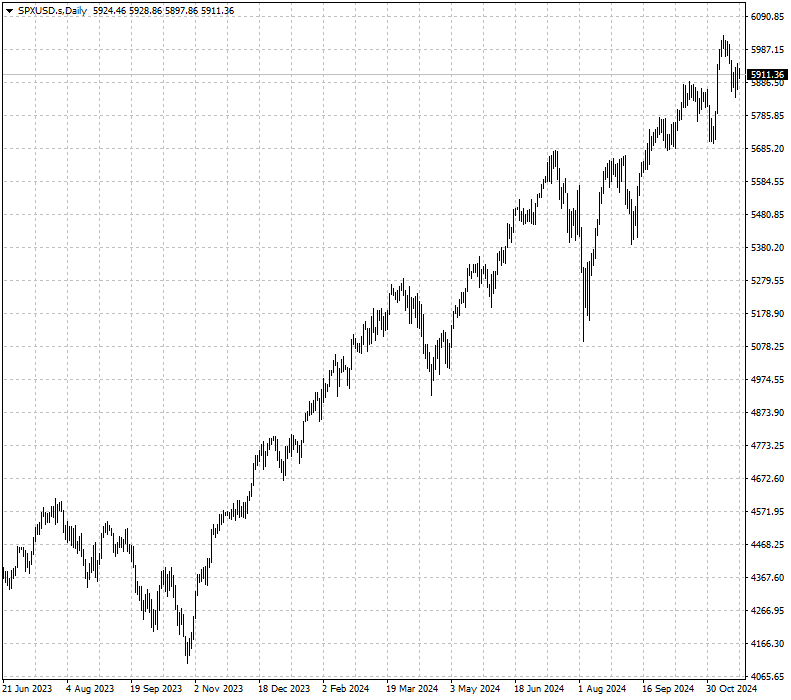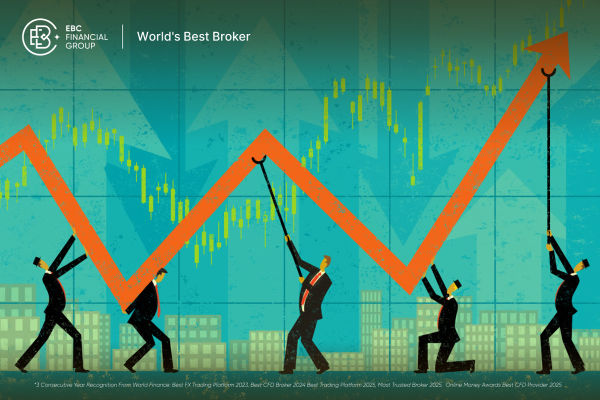Wall Street's three main indices hit record highs last week, continuing the
red-hot rally that began over a year ago. But retail investors remain outright
bullish on the market due to FOMO.

According to the AAII' latest survey, expectations that stocks will rise over
the next six months is now elevated at an "unusually high" 49.8%. The reading
was above 50% around 10% of the time after 1987.
Bubble could be rearing its ugly head. Birinyi Associates data showed, the
S&P 500 was trading on more than 26 times earnings (TTM) as of 15 November,
much higher than 19.7 a year previously.
A knee-jerk action in US stocks has run its course on profit-taking. Even
Donald Trump's own media group cash in on the stock market surge that has
followed his election victory.
Tesla's CFO Vaibhav Taneja has sold $2 million and board director Kathleen
Wilson-Thompson $34.6 million since the election. The EV maker appeared to be
among the biggest winners with Elon Musk's political bets.
The rate of so-called insider sales has hit a record high for any quarter in
two decades, according to VerityData. It was last this high when Trump was
elected president in Nov 2016.
"We have had a good run up. But the other story is that maybe the executives
are expecting revisions in equity prices," said Swami Kalpathy, a professor at
Texas Christian University, citing uncertainty around Trump.
Upside Potentials
Analysts at Morgan Stanley recommend buying US equities over their
international peers. But they note that the 'bull versus bear case skew' next
year is unusually wide with Trump heading the White House.
Their base case for the S&P 500 is 6500, up around 10% from Monday's
close. Despite that, their bull and bear cases call for 24% upside potential and
23% downside risk respectively.
Their peers at HSBC also saw further upside potential for stocks in 2025,
especially in the first half of the year. But they warned that US markets are
right at the edge of the 'Danger Zone'.
HSBC's model showed, a "reverse Goldilocks" beckons if 10-year Treasury yield
rises above 4.5%. The circumstance in turn "would very likely create 'havoc'
across all major asset classes."
Likewise, Goldman Sachs predicted that the index would reach as high as 6,500
by the end of 2025, on the back of continued growth in the US economy and
corporate earnings.
According to the bank, the "Magnificent Seven" will still outperform the
other companies in the index next year. but the balance of risk from more
"macro”"factors will narrow the spread to the lowest in 7 years.

It warned that risks remain high for the broader the market heading into
2025, due to a potential threat from tariffs and higher bond yields. Treasuries
are struggling even after Fed's jumbo rate cut.
Lavish Spending
Nvidia reported Q3 earnings that beat expectations for sales and earnings
while delivering a better-than-expected forecast for the current quarter. The
stock has nearly tripled in the year.
Anything but a blowout quarter was bound to be a disappointment given the
base effect for the bellwether for AI whose business is more dependent than ever
on a small group of customers.
Big Tech's capital spending is on track to surpass $200 billion this year and
rise even further in 2025. Wall Street is increasingly concerned about the
returns on immense investment in AI.
One sign that demand for generative AI was starting to lift Big Tech's growth
rates came from the accelerating growth in the cloud divisions at Microsoft and
Google. The optimism quickly dissipated though.
Microsoft warned that cloud growth would drop this quarter, while the growth
in Google' search volumes slowed. Also, few companies have revealed about the
effects of AI on their revenue.
Trump derided the CHIPS Act and said that he preferred to instead put tariffs
on chips from overseas. That could push up the cost of AI frontrunners heavily
reliant on production outsourcing.
The global foundry industry has effectively become a duopoly as TSMC and
Samsung are well ahead of other players regarding process technology. Neither of
them is based in the US.
Disclaimer: This material is for general information purposes only and is not
intended as (and should not be considered to be) financial, investment or other
advice on which reliance should be placed. No opinion given in the material
constitutes a recommendation by EBC or the author that any particular
investment, security, transaction or investment strategy is suitable for any
specific person.



























